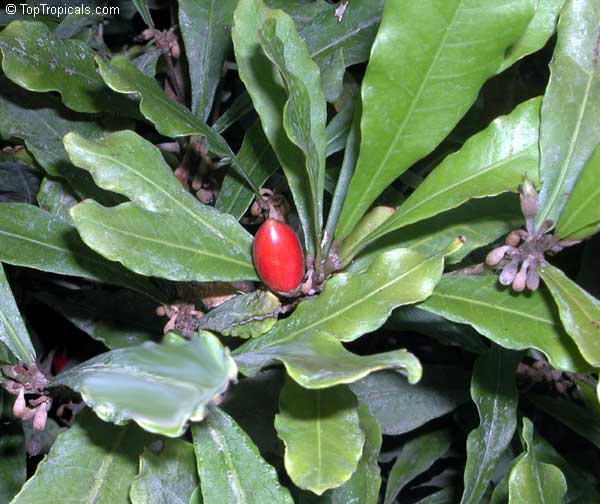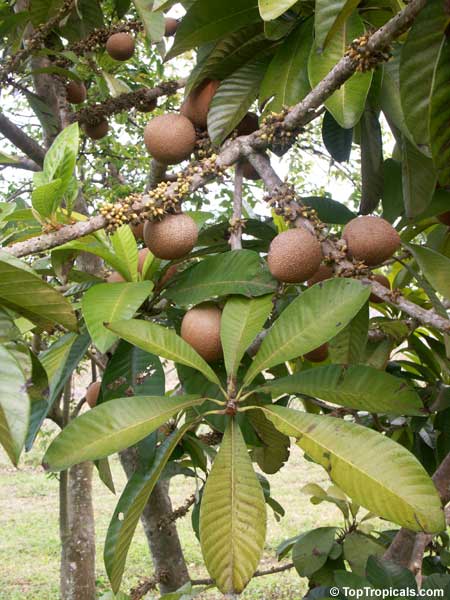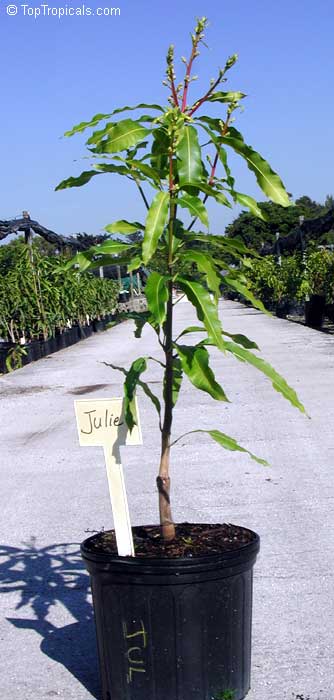Tropical Planting Breaks the Rules
Winter planting
by Murray Corman

Waiting for Arbor Day or the first day of spring to plant a tree is something of a missed opportunity for those of us who live in the virtually evergreen world of the tropics and subtropics.
Wintertime does not just mean hard work for tropical gardeners. It is also
a time to enjoy the fruits of our labor. Winter-blooming plants and the visitors
they attract - birds, bats and butterflies - make the garden as enjoyable in winter
as any other time of year.
What a welcome relief: January daytime temperatures in the 70s, dropping to the 60s at night. This is why I came to live in the subtropics of southern Florida. The balmy climate of South Florida represents one of the few places on the mainland United States where tropical plants thrive unprotected outdoors.
But just as I had to leave behind so many of my favorite northern trees, so too did I have to put behind me many of the so-called "rules" of horticulture. These had worked well for me up north and I thought they would hold true anywhere in the world. Florida's subtropical climate posed new challenges and I soon realized that gardening in the Sunshine State would not be business as usual. Waiting for Arbor Day or the first day of spring to plant a tree is something of a missed opportunity for those of us who live in the virtually evergreen world of the tropics and subtropics. Here in this fantasy-like world of perpetual green, the rules are different. If I can get used to the idea of ringing in the new year wearing a T-shirt and Bermuda shorts, then certainly I can adapt to a new gardening strategy.
Holmskioldia sanguinea (Chinese Hat) - winter bloomer
An Air-Conditioned Garden
Miracle fruit bears fruit year-round
Often the biggest labor investment involved in (and quite possibly the biggest objection to) growing fruit trees is the simple digging and preparatory work of planting. But fruit trees were my love and I wanted lots of them. The first lesson I learned in my Florida garden was that tasks performed during the spring and summer up north have to be done during the fall and winter here. Why? The answer is elementary: It's too hot! Taking advantage of the coolest months of the subtropical year for heavy chores like planting trees has a twofold benefit: The gardener can make hay while the sun shines without getting heat stroke and the plants appreciate the moderate temperatures, enjoying a break from the stress of 93 degrees in the shade. Many Florida gardeners do not want to plant saplings in the winter for fear that occasional cold fronts may bring freezing temperatures to the otherwise balmy conditions that prevail. Indeed, December 1989 saw four consecutive days of freezing temperatures throughout much of the peninsula. While these concerns are not unfounded, gardeners should keep in mind that newly planted trees, being relatively small in size, are fairly easy to protect from severe cold damage. Tried and true techniques for protecting tender plants from freezing temperatures include proper water and fertilizer for maximum plant health; planting saplings adjacent to the warm (southern) side of a building, windbreak or pond; shielding the foliage with protective covering; using sprinkler irrigation (either below the foliage or overhead); and applying protective sprays, antitranspirants or ice-nucleating bacteria. Moreover, planting trees in the winter and protecting them from cold snaps while small ensures that they will have an extra six months to take hold and grow strong to face whatever cold may come their way next winter.Noni fruiting at Christmas time is waiting for warmer weather indoors...
Roots Before Shoots
Grafted Avocado fruits in container
After the sapling has been planted, the new Florida gardener is often dismayed by the fact that it may not show signs of new growth. Almost immediately, the gardener laments the decision to plant in the winter and doubts whether the sapling will survive. This reaction stems from the expectation that the planting season coincides with the growing season. This is true in temperate regions, but not necessarily so in the subtropics. Even though new leaves may not emerge until spring, the sapling is busy producing new roots, mostly from stored energy. These roots will be needed to supply the new leaves with water and nutrients when they do appear. This is the way of sprouting seeds: They send down a root before they send up shoots. The sapling is preparing itself for its life in the subtropics. Despite the drier air of the Florida winter, it is the longer and wetter days of summer with their oppressively high temperatures that will demand the most water from the root zone. This is water the sapling will use to keep itself cool (a process known as evapotranspiration). If it is to survive, the sapling must develop a strong root system. Surprisingly, many people also forget that in winter the sun does not shine for as many hours during the course of the day. During the cooler months, the sun is no longer positioned directly overhead, as it is even before summer officially arrives. Even on a clear winter's day, the sun's radiation is greatly reduced because it must pass through hundreds of miles more of Earth's filtering atmosphere due to the shifted "angle of incidence." With reduced light, reduced rainfall and cooler temperatures, plant growth slows. A plant puts its energy underground into root development in anticipation of the spring flush that is quickly followed by a hot, rainy summer.Loquat - winter bloomer
Outfoxing the Dog Days
Perennial Asian Eggplant fruits year-round
This basic botany can work for or against your newly planted tree and its chances for survival, speedy growth and early fruiting. By the time spring arrives, trees planted in the subtropical winter can take the best advantage of both the increasing hours of sunlight (photoperiod) and the increased intensity of that sunlight. The torrid dog days of mid- and late summer are preceded by June rains in southern Florida. This affords a winter-planted tree a greatly accelerated rate of growth by summer's end, compared to trees just planted around the beginning of June. Winter plantings in Florida meet a dry reception, because this is the driest time of the year throughout the peninsula. It is important to keep in mind that because temperatures are cooler, the water needs of most plants are at their lowest. Newly planted trees, therefore, require very little attention. Even the simplest drip irrigation or other low-volume watering system can meet their watering requirements. Other environmental pressures are also reduced in the cooler season. Wildlife and insect feeding are at their lowest, as are infestations of the microscopic wildlife of bacterial and fungal diseases.Everbearing Mulberry
Pitaya (Dragon Fruit)
In other subtropical regions of the world, many tropical fruit growers enjoy what is called a "Mediterranean climate." In these places, which include Spain, Italy, California, North Africa and parts of the Middle East, and in the southern hemisphere parts of South Africa, Australia and Chile, a mild but wet winter precedes a dry, warm to hot summer. For gardeners in these areas, winter planting is also advantageous, allowing a tree to establish a strong root system before the onslaught of summer's drying winds and radiant heat.
Mamey Sapote sets fruit by winter
Guava is ever-bearing
Chilling Out
Spectacular winter bloomer - Hong Kong Orchid Tree
Now that you are ready to dig those holes and prepare your plantings, will you be able to find an adequate stock of fruit trees and other plants from nurseries during the winter season? Florida growers have long learned to bend the rules of gardening and remain well stocked throughout the year. Even the big, retail chain garden centers, the decision-making headquarters of which are in temperate territory, are catching on.Winter is a good time to make your selections even if you are not going to plant until spring. Growers are not as pressed by the busier routines demanded during their "big season." The slower pace allows them to spend more time with customers who may need help in making their selections and learning proper planting and aftercare. Shipment and local transport in winter's cooler weather reduces stress and damage to plants in route. Extreme heat can kill plants in transit if they are left in a vehicle or wrapped in packaging even for a short time. This is especially the case with "bare root" shipments via ground or air freight. International parcels too are usually protected from freezing winter temperatures, but not the stifling heat of summer.
Springtime planting of new trees will always have certain advantages, but you stand to save time and increase the viability of your plants if you study their needs and consider the unexpected advantages of planting in every season of the year. As subtropical gardeners in Florida and elsewhere have discovered, winter can be an extraordinarily fruitful time of year.
Mango is a winter bloomer











